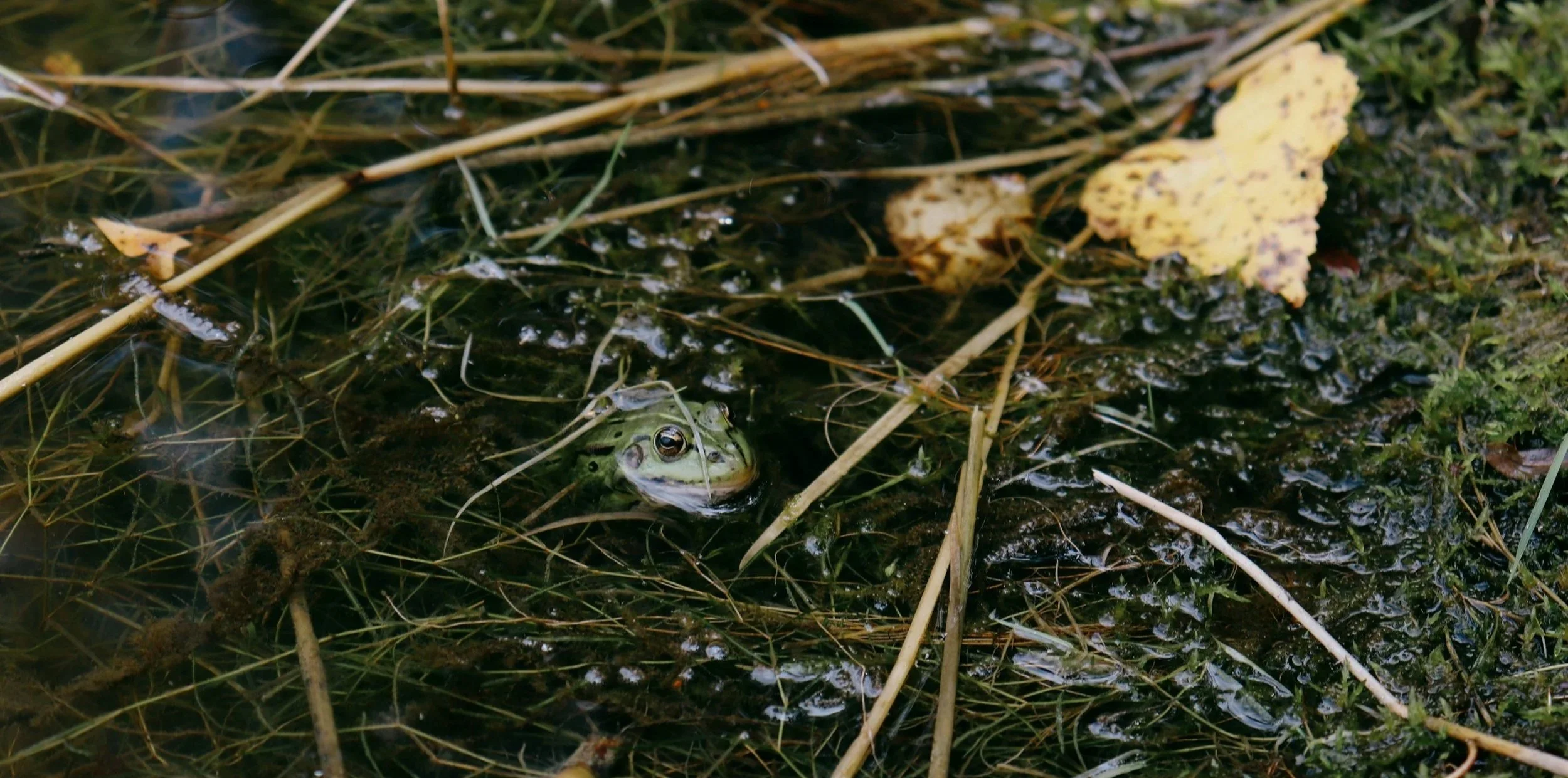Fall Pond Care in Southern New England: A Practical Guide for Healthy, Resilient Water Features
As cooler weather settles into Rhode Island and the rest of the Northeast, your pond begins a subtle but important shift. Plants slow down. Fish reduce their activity. Beneficial bacteria adapt to colder water. And the ecosystem as a whole prepares for the long winter ahead.
Fall pond care isn’t complicated, but it is strategic. The steps you take now determine how clean, stable, and healthy your water feature will be when spring arrives. For homeowners across Southern New England—where fall temperatures fluctuate wildly and early storms can dump leaves faster than you can scoop them—timing and attention matter.
Below is a clear, science-based, region-specific guide that reflects how we at Natural Elements by Design care for the ponds we build and maintain.
1. Keep Leaves Out Before They Become a Problem
In Rhode Island and Connecticut, fall leaf drop can happen all at once—especially after the first frost or a nor’easter. Oak, maple, pine needles, even coastal pitch pine debris all end up in ponds.
When leaves sink and break down, they release tannins and organic acids, fueling nutrient spikes that can cause:
murky brown water
algae when temps warm
low dissolved oxygen
stress on fish and beneficial bacteria
Use a net early. Mid-September is usually ideal. Don’t wait for heavy drop—wind can fill a pond overnight.
For heavily wooded properties: a skimmer basket will help, but a seasonal leaf net is essential for preventing overload.
2. Trim Back Dying Aquatic Plants
As temps fall into the 40s at night (September–October in Southern New England), aquatic plants naturally begin to break down. This decomposition adds extra nutrients to the water column at the worst possible time.
Cut back the following plants:
lilies (yellowing pads)
marginal plants like pickerel, iris, and arrowhead
tropical plants (they’re done for the season here)
Healthy root systems will overwinter just fine, but dying leaves should not be left to decay underwater.
3. Clean Your Pond Before It Goes Fully Dormant
A light fall cleaning is one of the best long-term water quality moves you can make. You don’t need a full drain and scrub unless there is heavy sludge, but removing organics before winter preserves oxygen levels.
Target areas that usually trap debris:
shelves
pockets around boulders
inside the skimmer
under fall stream sections
In Southern New England, ponds often get hit with early freeze-thaw cycles. Organics trapped under ice cause anaerobic pockets and off-gassing. A quick fall cleaning prevents that.
4. Swap to Cold-Water Bacteria
Water temperatures in Rhode Island and CT typically drop below 55°F by late October. Standard pond bacteria become less active at this threshold, while cold-water strains remain effective into the mid-30s.
Cold-water bacteria help:
break down lingering sludge
stabilize water quality
support oxygen levels
reduce spring cleanout needs
Even when your pond looks inactive, the biological processes beneath the surface never entirely stop. Cold-water bacteria give your pond the support it needs to overwinter cleanly.
5. Transition Fish to Low-Protein Diet (Then Stop Feeding)
Fish metabolism slows dramatically as temps drop.
Key guidelines for Southern New England climates:
Switch to a wheat-germ or cold-water formula around 55°F.
Stop feeding completely at 50°F.
Below that point, koi and goldfish cannot properly digest food. Any undigested food can ferment internally, leading to health issues.
Once ice forms, fish naturally go dormant and require nothing from you except stable, oxygenated conditions.
6. Protect Oxygen Levels Once Ice Forms
Our region often experiences freeze-thaw cycles followed by extended cold spells. The goal is to keep a single, stable opening in the ice to allow gas exchange.
Options include:
a pond aerator
a floating de-icer (not a heater—just an opening maintainer)
positioning the aerator shallow, not on the bottom, to avoid super-cooling deep-water fish zones
Never try to break ice by force—it stresses fish and can damage the pond.
7. Check Equipment Before Winter Shutdown
For clients who shut down their waterfalls or streams for winter, fall is the time to:
remove and store pumps
blow out exposed plumbing where needed
clear skimmer baskets
inspect check valves
ensure any auto-doser lines are winterized
Southern New England winters can swing from rain to deep freeze within hours. A bit of prep avoids cracked fittings or damaged components.
If you keep the system running all winter—which is absolutely viable with proper plumbing design—ensure the pump intake stays free of ice and the stream has enough flow to resist freezing.
8. Last Step: Enjoy the Seasonal Shift
Fall ponds in Rhode Island and Connecticut are beautiful—quieter, calmer, clearer. With the leaves gone and the water still flowing, it becomes a completely different type of landscape experience.
Taking care of your pond now is less about maintenance and more about preserving that winter beauty and ensuring everything wakes up clean and healthy in spring.
Need Help Preparing Your Pond for Fall?
Natural Elements by Design provides fall and winter pond maintenance for homeowners throughout Rhode Island and Eastern Connecticut. Whether you want a one-time seasonal service or full annual care, we can help keep your water feature clean, clear, and protected year-round.


